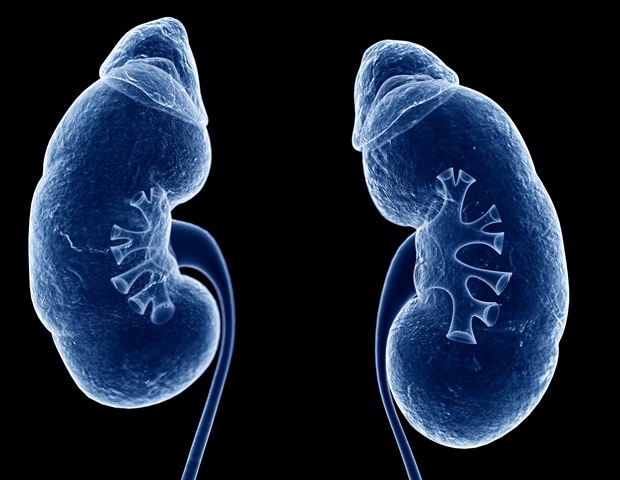A contemporary learn about printed within the JAMA Community Open Magazine assessed whether or not metabolic phenotyping all over being pregnant, past pre-pregnancy weight problems or gestational diabetes popularity, will increase the chance of adiposity threat within the offspring.
Find out about: Novel Metabolic Subtypes in Pregnant Girls and Possibility of Early Youth Weight problems in Offspring. Symbol Credit score: PeopleImages.com-Yuri A/Shutterstock.com
Background
Youth weight problems has drawn important consideration globally because of its affiliation with untimely morbidity. Contemporary analysis has indicated that maternal hyperglycemia and weight problems considerably affect offspring weight problems within the early years of lifestyles.
Those research have identified that each glycaemic and non-glycaemic metabolic elements in pregnant females affect fetal building. Then again, you will need to establish how those elements affect offspring adiposity.
Advent
Prior research have evaluated the connection between particular person/categories of metabolic biomarkers, akin to insulin, lipoproteins, glucose, and unfastened fatty acids (FFAs), with offspring adiposity.
Then again, those research failed to clarify how interrelated biomarkers impact categories of bioactive compounds. You will need to analyze the metabolic profile all over being pregnant to know whether or not biomarkers affect offspring weight problems.
This learn about hypothesized that the unsupervised classification method supplies outstanding subgroups connected to differential adiposity characteristics within the offspring.
Concerning the Find out about
This observational learn about is according to a pre-birth cohort that recruited pregnant females between 2010 and 2014.
All members on this learn about have been 15 years or older, had no historical past of stillbirths or singleton beginning, and weren’t identified with severe persistent illness. A complete of one,325 females have been recruited on this learn about.
Related knowledge have been bought at other time issues, i.e., mid-pregnancy, late-pregnancy, supply, and early early life. Even if blood samples of one,325 females have been bought at mid-pregnancy, 1,116 members equipped offspring anthropometry knowledge, and 727 members equipped early life knowledge.
It used to be noticed that girls who didn’t have neonatal or early life anthropometric knowledge belonged to a more youthful subgroup, had a decrease nutrition high quality, have been much less trained, and have been prone to have smoked all over their being pregnant.
An unmanaged k-means clustering approach used to be used to locate metabolic subgroups of girls. One of the most essential biomarkers integrated in k-means clustering have been glucose, high-density lipoprotein ldl cholesterol (HDL-C), general ldl cholesterol (TC), triglycerides (TGs), insulin, unfastened fats mass, and tumor necrosis issue α (TNF-α). The ratio of TGs: HDL-C and Homeostatic Style Evaluate of Insulin Resistance (HOMA-IR) have been additionally integrated as parameters.
Neonatal physique composition (e.g., fats mass-FM and fat-free mass-FFM) used to be assessed the usage of air displacement plethysmography (PeaPod). In early early life, equivalent measurements have been bought the usage of whole-body air displacement plethysmography (BodPod)
Find out about Findings
The imply maternal age of the members used to be round 28 years. Roughly 50% of the offspring have been feminine, whose reasonable birthweight used to be 500 grams, and 1.9% have been massive of their gestational age. The BMI at early early life (~5 years of age) published that 6.2% had weight problems.
5 distinctive maternal metabolic subgroups have been recognized according to seven biomarkers derived from fasting blood samples at 17 gestational weeks.
In keeping with the extent of the metabolic biomarkers, the recognized subgroups or references are excessive HDL-C, dyslipidemic–excessive FFA, IR-hyperglycemic, and dyslipidemic–excessive TGs. Moreover, a keep watch over crew with standard BMI used to be recognized.
The subgroups displayed variations in way of life, demography, and prenatal threat elements for offspring weight problems. It used to be noticed that the moms associated with the IR-hyperglycemic subgroup have been on the easiest threat of offspring adiposity within the neonatal and early life sessions.
Moreover, moms of the dyslipidemic–excessive FFA or IR-hyperglycemic subgroups exhibited a better threat of weight problems of their offspring.
The IR-hyperglycemic subgroup used to be characterised by means of insulin resistance, and an atherogenic lipid profile used to be observed all over mid-pregnancy. It used to be noticed that TGs are essential drivers of new child weight. Round 14% of the cohort belonged to the dyslipidemic–excessive TGs subgroup.
A powerful affiliation used to be discovered between excessive TGs publicity in utero and larger offspring adiposity. TGs within the presence of insulin resistance additionally enhanced the chance of offspring adiposity. Against this, TGs didn’t affect offspring adiposity with out a upper glycemic index.
FFA ranges in mid-pregnancy have been already upper within the dyslipidemic–excessive FFA subgroup than within the FFA ranges keep watch over subgroup in overdue being pregnant.
A excessive HDL-C subgroup constituted 27% of the learn about cohort, and offspring from this crew of girls exhibited no distinction in adiposity at beginning or early early life in comparison to the keep watch over crew.
Conclusions
The present learn about has barriers, together with the loss of early life anthropometric knowledge of all members’ offspring. Curiously, females who failed to offer knowledge on their offspring’s adiposity results had a decrease nutrition high quality, smoked all over their being pregnant, and have been much less trained.
Those stipulations had been connected to offspring weight problems. Every other limitation of the k-means clustering set of rules used to be the loss of a predefined okay price.
Regardless of the restrictions, the present learn about indicated that the unsupervised clustering approach may successfully establish distinct metabolic subgroups of pregnant females.
Those subgroups may show the differential dangers of offspring adiposity in early early life.
Supply By means of https://www.news-medical.internet/information/20230406/Can-metabolic-phenotyping-of-pregnant-women-beyond-pre-pregnancy-obesity-or-gestational-diabetes-status-improve-the-assessment-of-adiposity-risk-in-offspring.aspx




